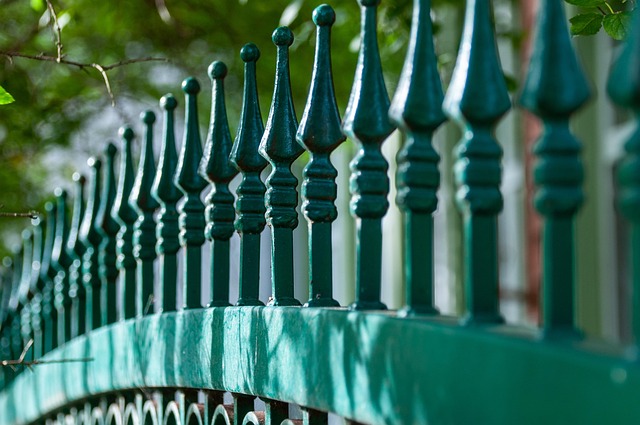Introduction:
Elevate the aesthetic appeal and longevity of your wooden fence with professional staining and sealing. This comprehensive guide navigates the intricacies of fence maintenance, offering insights into understanding stain benefits and types, preparing your fence, selecting the perfect color, and employing effective sealing techniques. By following these expert tips, you’ll achieve a vibrant, protected finish that enhances your outdoor space for years to come. Prepare to transform your wooden fence from ordinary to extraordinary.
- Understanding Fence Staining: Benefits and Types
- Preparing Your Wooden Fence for Staining
- Choosing the Right Stain: Color Options and Applications
- Sealing Techniques to Protect Your Fence
- Maintenance Tips for Long-Lasting Results
Understanding Fence Staining: Benefits and Types
Fence staining is an effective way to enhance the beauty and durability of your wooden fence. By applying a protective coat of stain, you not only transform its appearance but also safeguard it from the elements. Benefits include increased fade resistance, mold and mildew prevention, and a deeper, more vibrant color that complements your outdoor space.
There are various types of fence stains available, each with unique characteristics. Water-based stains are popular for their low odor and quick drying time, while oil-based options offer superior durability and protection against UV rays. Some stains also contain sealant, providing an extra layer of defense against water damage and fading. Choosing the right type depends on factors like your climate, desired color retention, and the overall condition of your fence.
Preparing Your Wooden Fence for Staining
Before applying any stain or sealant, preparing your wooden fence is a crucial step in ensuring optimal results. Start by inspecting the fence to identify any damages, such as rot, cracks, or loose boards. Repair these issues using suitable materials like wood putty or replacement boards to create a smooth and even surface. Sanding the fence gently with fine-grit sandpaper helps to remove any rough textures and opens up the pores of the wood, allowing for better stain absorption.
Next, clean the fence thoroughly to eliminate dirt, dust, and debris. Use a pressure washer or a garden hose with a spray nozzle for this task. Make sure to remove all residue from previous treatments or natural debris buildup. If necessary, apply a light coat of primer designed for exterior use to improve adhesion. Allow adequate time for drying before proceeding to the staining process, ensuring that your fence is ready for a long-lasting and visually appealing finish.
Choosing the Right Stain: Color Options and Applications
When choosing a fence stain, color options are vast and varied, catering to every taste and preference. Traditional stains often range from rich, deep browns to natural wood tones, enhancing the grain and texture of the fencing. For a more contemporary look, lighter shades like gray or even white can be selected to create a bold statement and provide a clean, modern aesthetic. You might also opt for unique colors like red or blue for a playful twist.
Consider not only your personal style but also the fence’s surroundings and existing color schemes in your outdoor space. Ensure that the chosen stain complements nearby plants, architecture, or other structures to create a harmonious and aesthetically pleasing environment. Additionally, think about the application method; some stains are designed for brush application, while others come with a ready-to-use spray bottle, offering different levels of convenience and coverage.
Sealing Techniques to Protect Your Fence
When it comes to protecting your wooden fence, sealing is an essential step beyond simple staining. The right sealant creates a protective barrier, shielding the wood from the elements and preventing moisture absorption. This is crucial as water can leach into the wood, causing rot and eventual structural damage.
There are various sealing techniques available, each offering different levels of protection and aesthetics. Some sealants are designed to be more durable against UV rays, ideal for fences exposed to direct sunlight. Others may enhance the natural grain of the wood or provide a high-gloss finish. Water-based sealants are popular for their low odor and quick drying time, while oil-based options offer superior durability and protection against stains.
Maintenance Tips for Long-Lasting Results
Regular maintenance is key to ensuring your fence staining and sealing project stands the test of time. After initial application, reapply a fresh coat of stain every 2-3 years to maintain color and protect wood from harsh weather conditions. Throughout the year, inspect your fence for any signs of fading, chipping, or peeling, and address these issues promptly with touch-ups as needed.
In addition to regular staining, sealing is an important step to safeguard your wooden fence. Apply a water-based sealant every 1-2 years to create a protective barrier against moisture, dirt, and UV rays. Regular cleaning of the fence using mild soap and water can also help maintain its appearance and prolong the life of both the stain and sealant.
